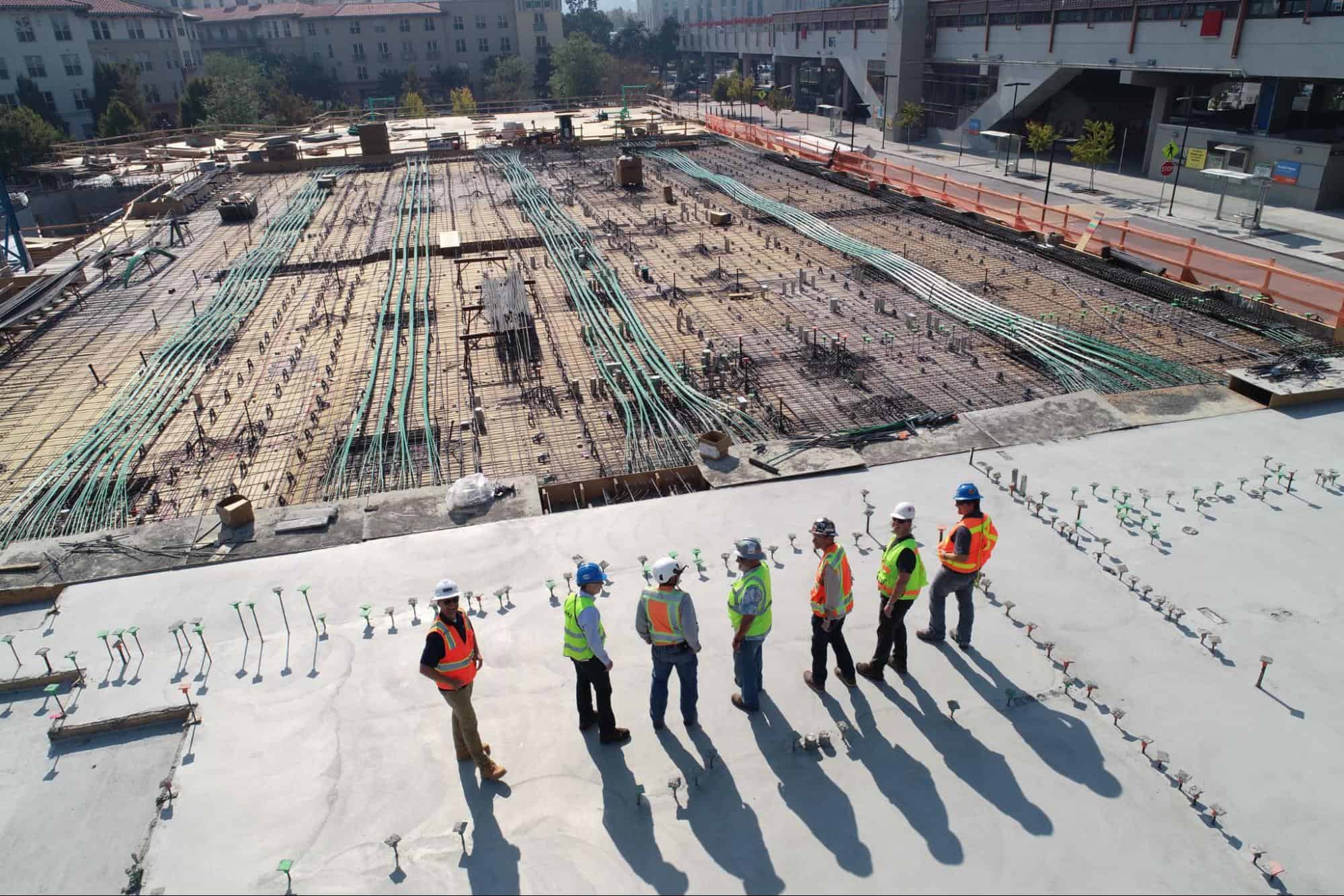Ventilation Requirements for Office Buildings
Photo: UnsplashOffice buildings around the country are occupied by millions of workers for hours at a time every day. Keeping these buildings safe...
Floor, wall and ceiling mounted to meet your unique project design.
Despite uncertain times and ongoing supply chain management issues, the truth is that construction is still a lucrative field.
According to the Associated General Contractors of America, the construction field creates over $1.4 trillion of structures every year. Given the sheer amount of money involved, it makes sense to understand the construction bidding process.
While it seems unclear at first, the reality is that the bidding process for construction projects are easier to follow than meets the eye.
This guide is best not just for those new to general contracting but as a good refresher for project managers ready to take the bidding process in construction to the next level.
What is the bidding process in construction? In short, the construction bidding process is the best way for project owners to determine the company that is the right fit for the specific project at hand.
This is not solely about talent, as plenty of talented general contractors fail to get the lion’s share of projects.
The biggest obstacle? Finding projects. Project owners within the construction industry post projects looking for bid solicitations.
The step by step construction bidding process lends itself well to building a system for getting ongoing work, as well as moving projects through the project management pipeline.
A classic concern when it’s time to explore the bidding process in construction is whether or not to just bid the lowest price on the project. The short answer is easy: no, not at all.
The lowest bid may not properly reflect the right cost estimate or the time and material involved with the construction project as a whole.
When examined at a deeper level, the companies that were awarded the contract in the past actually had bids that reflected deep knowledge of the scope of work and presented a bid package that indicated they had the labor, expertise, and specific design and construction knowledge to deliver on the project.
While there’s more than one procurement method within the construction scene, the most common one would be the design, bid, build process.
It is classic because it requires the project owner to submit designs, a separate bidding period, and then a build period that requires coordination between the construction manager, general contractor, and other stakeholders.
This basic procurement path is ideal for several reasons:
The process isn’t without its obstacles for the general contractor starting out: for example, trying to figure out the bid-hit ratio or guaranteed maximum price can take some time.
An important concept to understand throughout the entire construction bidding process is the idea of risk management.
These projects are usually quite large and cover a lot of time, money, and resources. This means that a contractor has to put themselves not just in their own shoes but in the shoes of their potential project owner.
One way to increase the bid-hit ratio (successful project bids to non-successful bids) is to assume part of the risk.
This is done through the guaranteed maximum price. It essentially is part of the bid that outlines exactly the maximum that the project owner would pay for the work involved.
Of course, this is not something that should be done in haste. Indeed, setting the absolute maximum means looking at what it would cost realistically because any overages through delivery methods and other project factors, including labor and parts, would be the contractor's responsibility.
When you start bidding on a project, construction begins to go from concept to actuality. Visualizing the end goal helps shape the bid, which can take some time to refine. The point of a bid is to give a roadmap from the concept to the finished product.
One way to increase success in the commercial construction bidding process is to look at ways to reduce costs. For example, if the build needs reliable parts for airflow management, an underfloor air distribution system can make more sense than the alternatives.
Putting this directly into the bid along with justification for the change can signal to the stakeholders that your insight into what’s needed as a general contractor is what’s needed to get the project done (and land more potential bid invitations, as well).
A successful bid has to include well-defined components, including the cost of labor, materials, and a clear timeline. When viewed from the perspective of the team responsible for bid selection, this makes sense.
Indeed, seasoned project managers will relate to the need to have things laid out in a clear manner. Unfortunately, delays and contingencies are part of the construction process, despite clear plans.
However, the clear plans make it easier for the project owner to know how the contractor will pivot and redirect resources to meet deadlines.
Whether contractors are putting in their first bid or their 100th bid, the process is still the same. Getting clear about matching the bid to the project owner’s vision is critical for bid success.
Not every bid will lead to a successful selection, but working through making bids more detailed is key to getting better at the process.
AirFixture’s underfloor air distribution systems are just one example of how adding reliable systems can push forward a bid to the next stage.
By having a clear idea of the best materials, general contractors signal to the project owner that they know what to do to get the job done.
For more information, contact us today.
Photo: UnsplashOffice buildings around the country are occupied by millions of workers for hours at a time every day. Keeping these buildings safe...

Mass timber construction is a sustainable building technique that uses mass timber products such as cross-laminated timber (CLT) to build large...

One of the fastest growing trends in architecture is mass timber buildings. As of March 2023, there are more than 1700 completed mass timber projects...
